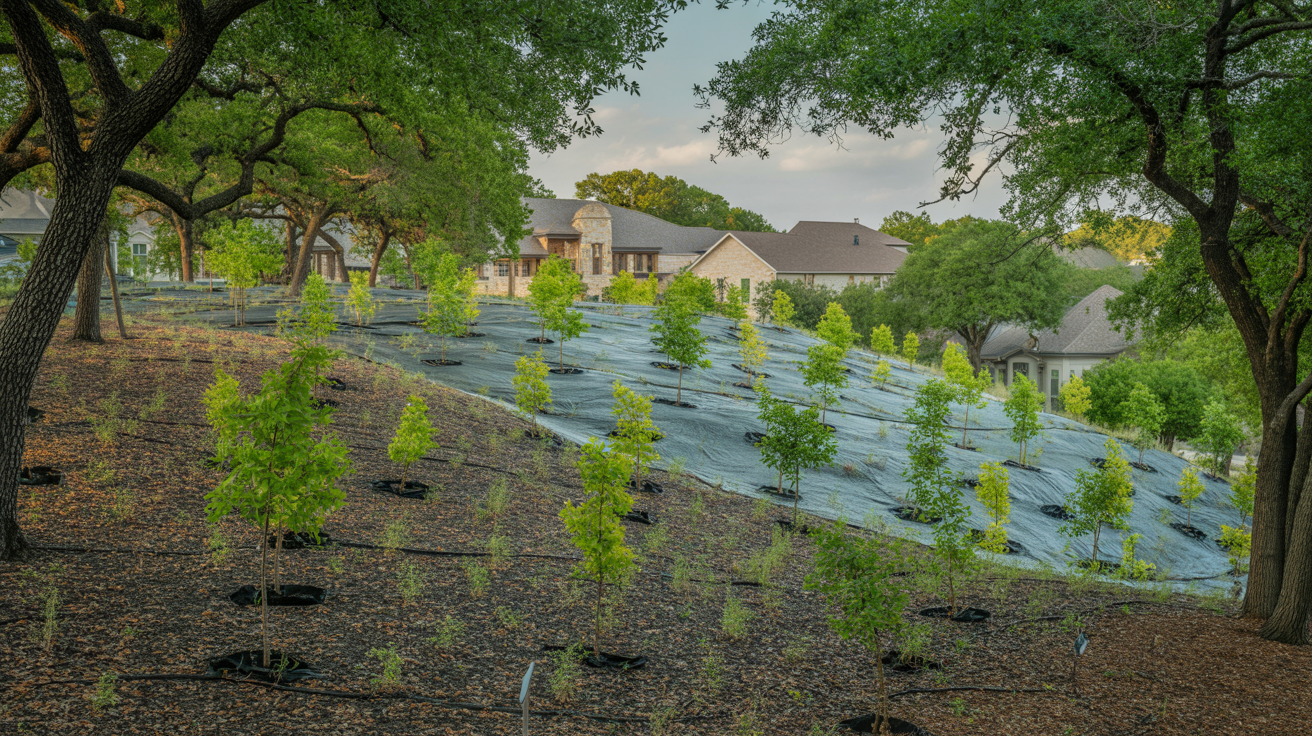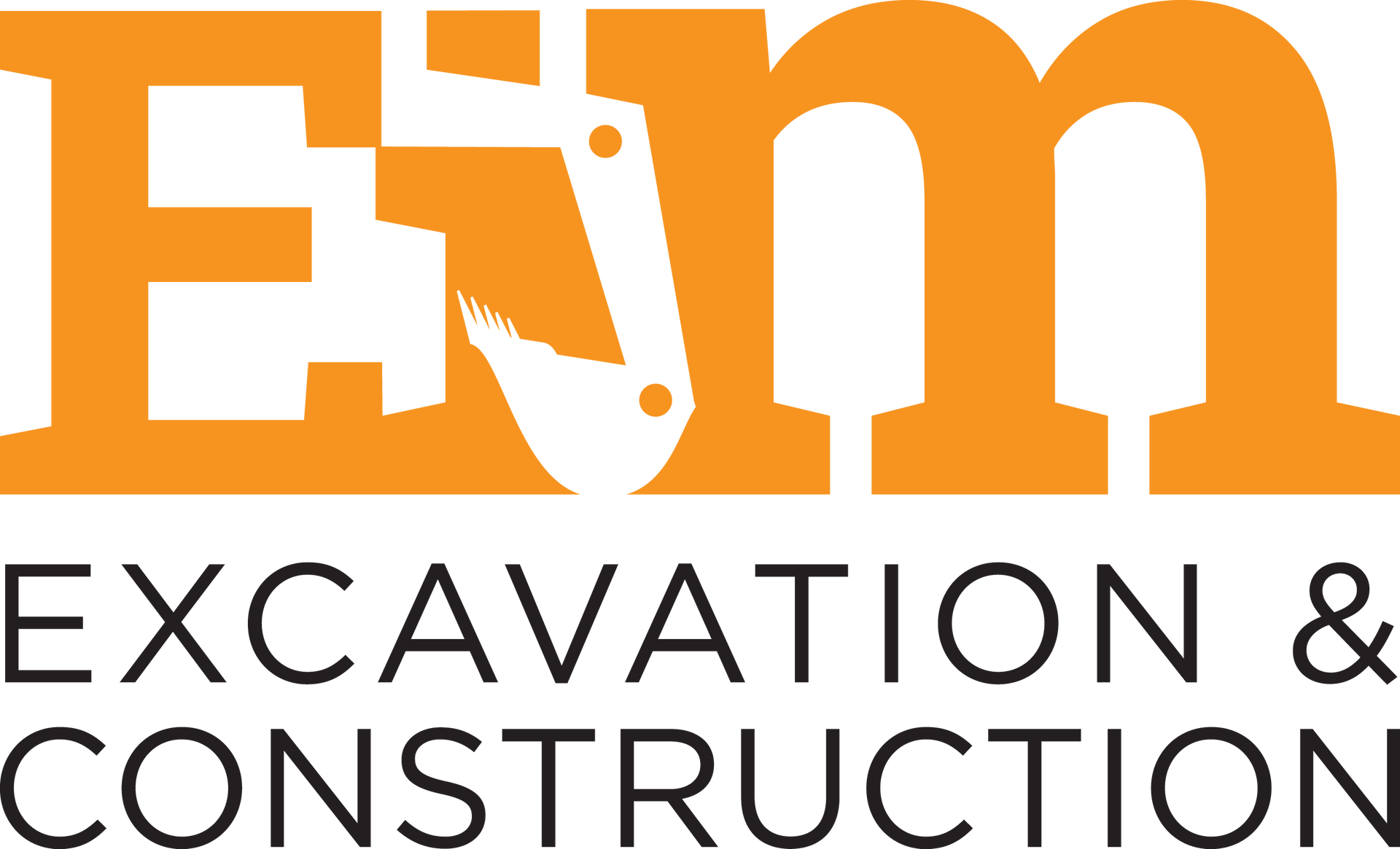Understanding french drain cost factors can save you thousands of dollars and prevent costly water damage to your property. After two decades in construction and founding Earth in Motion in Austin, Texas, I've installed drainage systems across diverse terrain from the rocky hills of Colorado to the clay soils of Central Texas. The pricing for these systems depends on several critical factors that I want to share with you today.
Most homeowners get sticker shock when they first receive quotes for French drain installation. But here's what I've learned over the years: the upfront investment in proper drainage always costs less than dealing with foundation damage, flooded basements, or destroyed landscaping later on.
What Makes French Drain Installation Expensive
The biggest surprise for most property owners is that labor makes up about eighty-five percent of your total project cost. Materials only account for roughly fifteen percent. This ratio exists because French drain installation is incredibly labor-intensive work that requires specialized equipment and expertise.
During my military service, I learned the value of proper preparation and execution. These same principles apply to drainage work. You're not just paying for someone to dig a trench and lay pipe. You're investing in precise grading, proper pipe placement, correct gravel selection, and skilled restoration of your landscape.
I remember a project in Austin where the homeowner asked why the installation cost seemed high compared to the materials. I explained that we spent three days excavating through dense clay soil, carefully grading the trench for proper water flow, and ensuring the system would function perfectly for decades. The excavation alone required specialized equipment and years of experience reading soil conditions.
Why Location Dramatically Affects Your Investment
Where you install your French drain creates the most significant impact on your final cost. Exterior systems around your yard or garden beds require much less work than interior basement installations. Exterior drains mean we're working in open spaces with easier access for equipment.
Interior basement drainage systems demand extensive additional work. We often need to break through concrete floors, install sump pump systems, and work in cramped conditions with limited equipment access. These constraints naturally increase both time and complexity.
In Colorado, I've worked on mountain properties where exterior French drains required navigating rocky terrain and steep slopes. These challenging conditions increased the labor requirements, but the alternative was watching spring snowmelt wash away expensive landscaping every year.
Site Conditions That Drive Your Project Cost
Every property presents unique challenges that influence your drainage system investment. After installing systems across Texas and Colorado, I've encountered virtually every soil type and terrain condition imaginable.
Soil Type Makes a Huge Difference
Austin's notorious clay soil creates different challenges than Colorado's rocky mountain terrain. Clay soil becomes incredibly difficult to excavate when wet and rock-hard when dry. This means timing the project correctly and sometimes bringing in specialized equipment to break through compacted layers.
Rocky soil presents its own obstacles. In Colorado, I've spent entire days working around large boulders that couldn't be moved. Sometimes we need to adjust the drain route or bring in heavier equipment to break through rock formations.
Sandy soil, while easier to excavate, requires different techniques to prevent trench collapse during installation. Each soil type demands specific approaches that affect both time and equipment needs.
Site Accessibility Impacts Everything
Can we get our equipment to the installation area? This simple question dramatically affects your project scope. Properties with narrow gates, steep slopes, or limited access require more manual labor and smaller equipment. What might take one day with full equipment access could require three days with limited access.
I once worked on a Austin hillside property where we couldn't get our trenching equipment within fifty feet of the installation area. Everything had to be carried in by hand, tripling the labor time but saving the homeowner's mature landscaping.
System Complexity and Additional Components
The complexity of your drainage solution significantly influences your investment. Simple yard drainage systems require basic trenching and pipe installation. Complex basement waterproofing systems might need sump pumps, backup power systems, and multiple drainage zones.
When You Need Additional Equipment
Sump pump installation adds substantial complexity to interior drainage projects. These systems require electrical connections, backup power consideration, and integration with your home's existing systems. The pump itself is just one component - installation requires coordination with electrical work and sometimes backup battery systems.
Properties with high water tables or seasonal flooding might need multiple drainage zones connected to central collection points. These systems require more extensive planning and installation time.
Depth and Length Requirements
Shallow drainage systems around garden beds require different approaches than deep perimeter drains protecting foundation walls. Deeper trenches mean more excavation time, additional safety precautions, and sometimes specialized shoring to prevent trench collapse.
The total length of your system obviously affects the overall project scope. A fifty-foot garden drain requires much less work than a two-hundred-foot perimeter system around your entire home.
Hidden Costs That Surprise Homeowners
Smart homeowners budget for expenses beyond the basic installation. These additional costs aren't surprises when you work with experienced contractors who explain the complete project scope upfront.
Landscape Restoration
French drain installation always disturbs your existing landscaping. Budget for sod replacement, reseeding, or replanting affected areas. The extent depends on your system's size and location, but some landscape restoration is inevitable.
I always discuss landscape restoration during initial consultations. Some homeowners want premium sod replacement, while others prefer economical reseeding. Both approaches work, but they represent different investment levels.
Permits and Inspections
Many municipalities require permits for drainage work, especially systems that connect to storm sewers or affect property drainage patterns. Permit costs vary by location, but they're often required for proper installation.
In Austin, certain drainage projects require city permits and inspections. I help homeowners navigate these requirements, but the associated fees become part of your project investment.
Existing System Modifications
Sometimes your new French drain needs to integrate with existing drainage systems or utilities. This might require rerouting sprinkler lines, adjusting existing drains, or working around underground utilities.
I've encountered properties where existing drainage systems actually fought against proper water management. Correcting these issues adds value but also increases project complexity.
Professional Installation Versus DIY Approaches
Many homeowners consider installing French drains themselves to reduce costs. While this approach can save money on labor, it carries significant risks that often cost more in the long run.
The Reality of DIY Installation
DIY French drain installation requires specialized knowledge about proper grading, pipe sizing, gravel selection, and local drainage regulations. Small mistakes in any of these areas can create systems that fail during the first major storm.
I've repaired numerous failed DIY installations over the years. Common problems include incorrect pipe slopes, inadequate gravel coverage, and poor connections to drainage outlets. These failures often require complete system replacement rather than simple repairs.
Equipment rental costs also add up quickly for DIY projects. Trenching equipment, compaction tools, and material delivery can approach professional installation costs without the expertise and warranty protection.
Long-Term Value Considerations
Professional installation includes proper system design, quality materials, and warranty protection. When I install a French drain system, it includes ongoing support and maintenance guidance. This relationship continues long after project completion.
Properly installed French drains protect your property investment for decades. The initial professional installation cost spreads across years of reliable performance and property protection.
Material Quality Impact on Overall Investment
While materials represent a smaller percentage of total project cost, quality choices significantly affect long-term performance and maintenance requirements.
Pipe Selection Makes a Difference
High-density polyethylene pipes cost more initially but provide superior durability and flow characteristics. These pipes resist crushing, maintain their shape over time, and handle freeze-thaw cycles better than cheaper alternatives.
I've seen corrugated plastic pipes collapse under soil pressure within five years, requiring complete system replacement. Quality pipe materials prevent these failures and protect your investment.
Gravel and Filter Fabric Choices
Proper gravel gradation ensures effective drainage while preventing pipe clogging. Washed gravel costs more than unwashed alternatives, but it prevents fine particles from clogging your system over time.
Quality filter fabric prevents soil infiltration while allowing water flow. Cheap fabric deteriorates quickly, leading to system clogs and reduced performance.
Regional Variations in Project Investment
French drain costs vary significantly across different regions due to local soil conditions, labor rates, and regulatory requirements. My experience working in Texas and Colorado has shown me these variations firsthand.
Texas Specific Considerations
Austin's expansive clay soils create unique challenges for drainage installation. These soils expand and contract dramatically with moisture changes, requiring specific installation techniques to prevent pipe damage.
Texas also experiences intense rainfall events that demand robust drainage systems. Hurricane and tropical storm drainage requirements often exceed typical residential drainage needs, influencing system design and installation approaches.
Colorado Mountain Conditions
Colorado's mountain terrain presents different challenges including rocky soils, seasonal freeze-thaw cycles, and steep terrain drainage management. These conditions require specialized installation techniques and materials rated for extreme temperature variations.
High altitude construction also means shorter working seasons and weather-dependent scheduling, factors that influence project planning and costs.
Making Smart Investment Decisions
The best approach to French drain investment is understanding your property's specific needs and choosing solutions that provide long-term value. This means looking beyond initial cost to consider performance, durability, and maintenance requirements.
Evaluating Your Property's Needs
Start with a thorough assessment of your drainage challenges. Simple water management around garden beds requires different solutions than basement flooding protection or foundation preservation.
I always begin projects with comprehensive site evaluation, looking at natural water flow patterns, soil conditions, and existing drainage infrastructure. This assessment guides system design and helps prioritize the most important drainage improvements.
Planning for Future Expansion
Consider designing your initial French drain system with future expansion possibilities. Sometimes installing slightly larger pipes or extending collection points costs little extra during initial installation but provides significant savings for future additions.
I've worked with homeowners who started with basic yard drainage and later expanded to comprehensive property-wide systems. Planning ahead made these expansions much more cost-effective.
Maintenance and Long-Term Costs
Properly installed French drain systems require minimal maintenance but some ongoing care to maintain peak performance. Understanding these requirements helps you budget for long-term ownership costs.
Routine Maintenance Requirements
Annual system inspections help identify potential problems before they become expensive repairs. This includes checking outlet points for clogs, ensuring proper water flow, and inspecting access points for damage.
Every few years, professional cleaning helps remove accumulated sediment and debris. This preventive maintenance extends system life and maintains drainage effectiveness.
When Repairs Become Necessary
Even quality installations may need occasional repairs due to ground settlement, root intrusion, or damage from other construction activities. Addressing these issues quickly prevents minor problems from becoming major system failures.
The modular nature of properly designed French drains allows for targeted repairs without complete system replacement in most cases.
Protecting Your Property Investment
French drain systems provide exceptional value by preventing much more expensive water damage problems. Foundation repairs, basement restoration, and landscape replacement all cost significantly more than proper drainage installation.
I've seen homeowners spend tens of thousands repairing foundation damage that could have been prevented with properly installed drainage systems costing a fraction of the repair expense.
During my twenty years in construction, the most satisfied clients are those who invested in quality drainage systems before problems developed. These proactive installations protect property values and prevent the stress and expense of water damage remediation.
When you're ready to protect your property with professional French drain installation, remember that understanding french drain cost factors helps you make informed decisions that provide decades of reliable water management and property protection.



